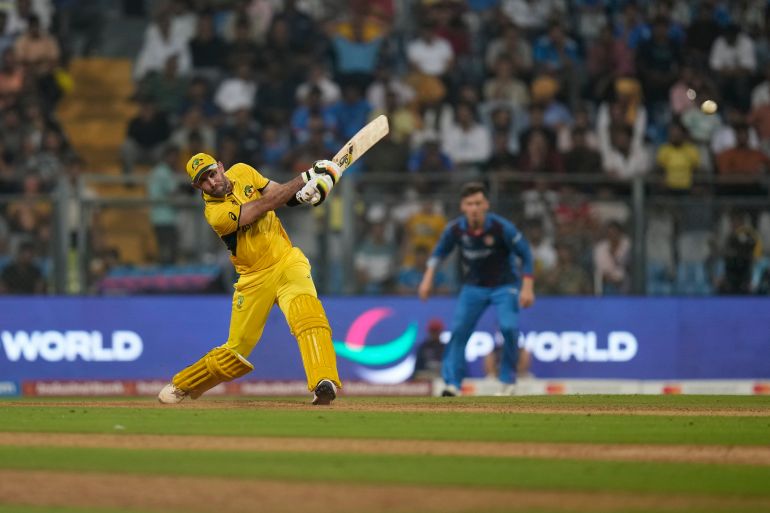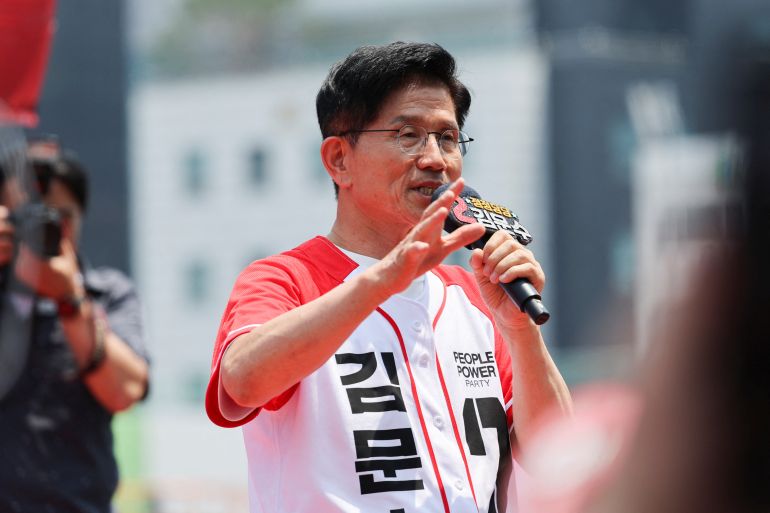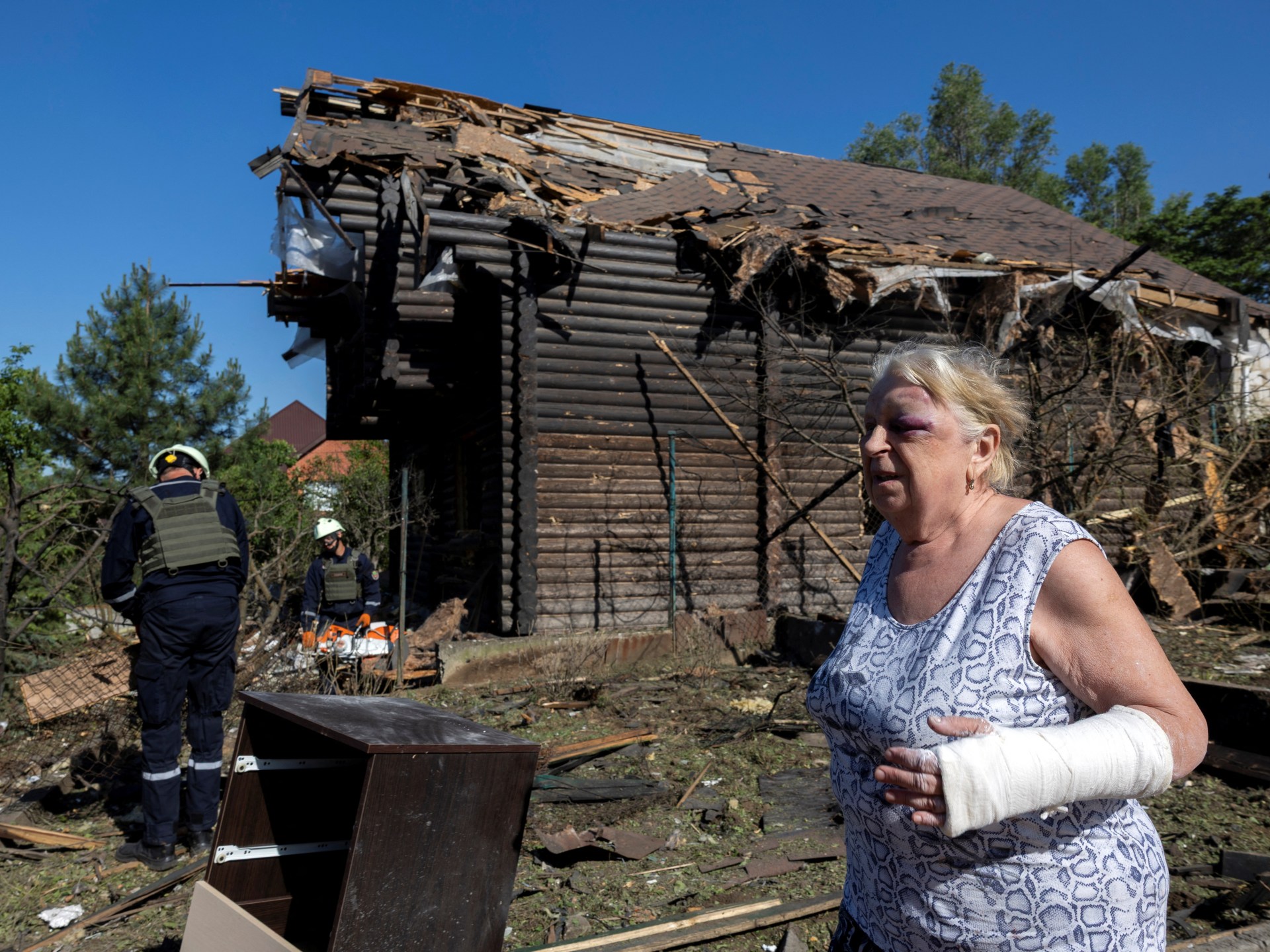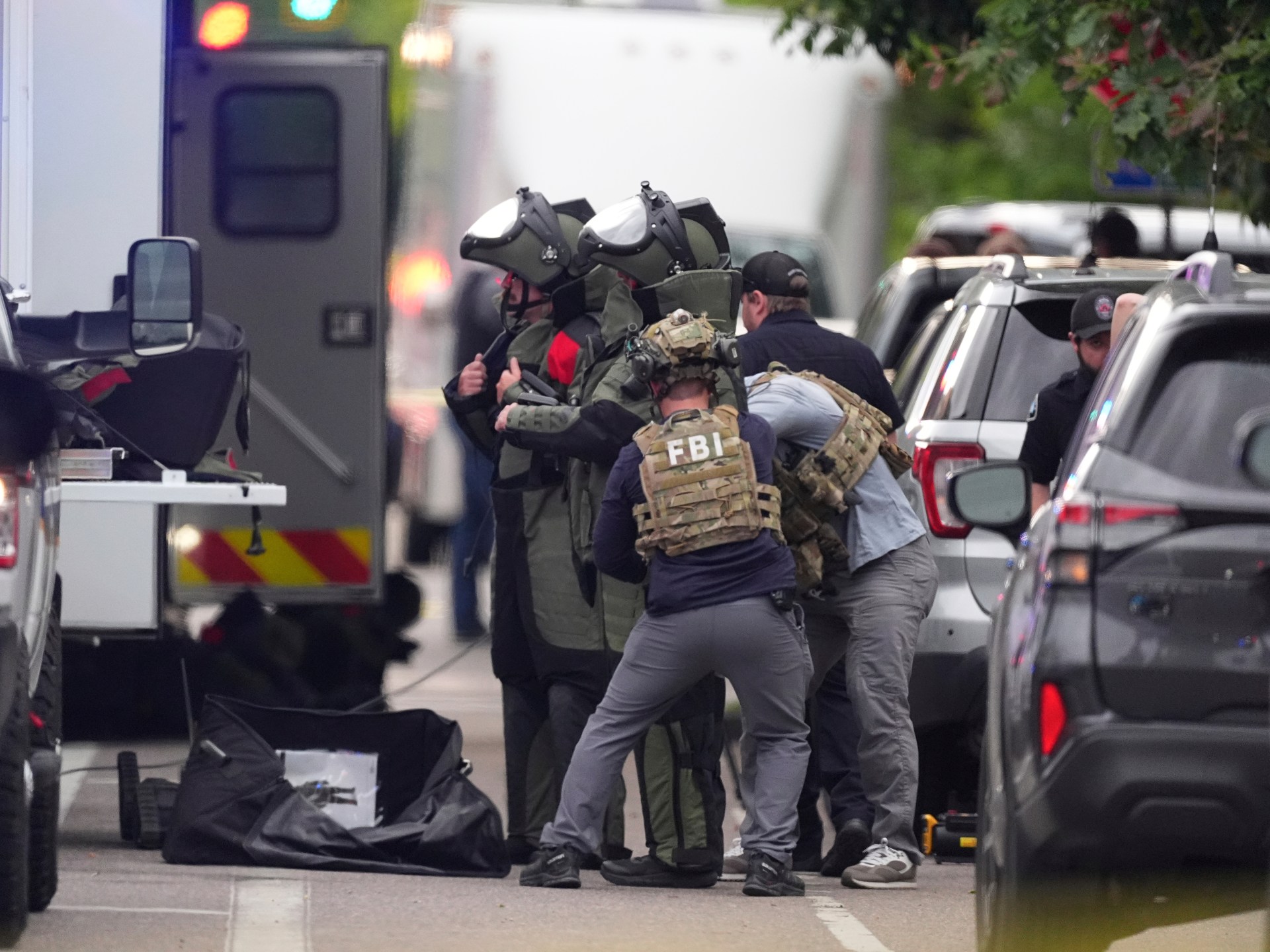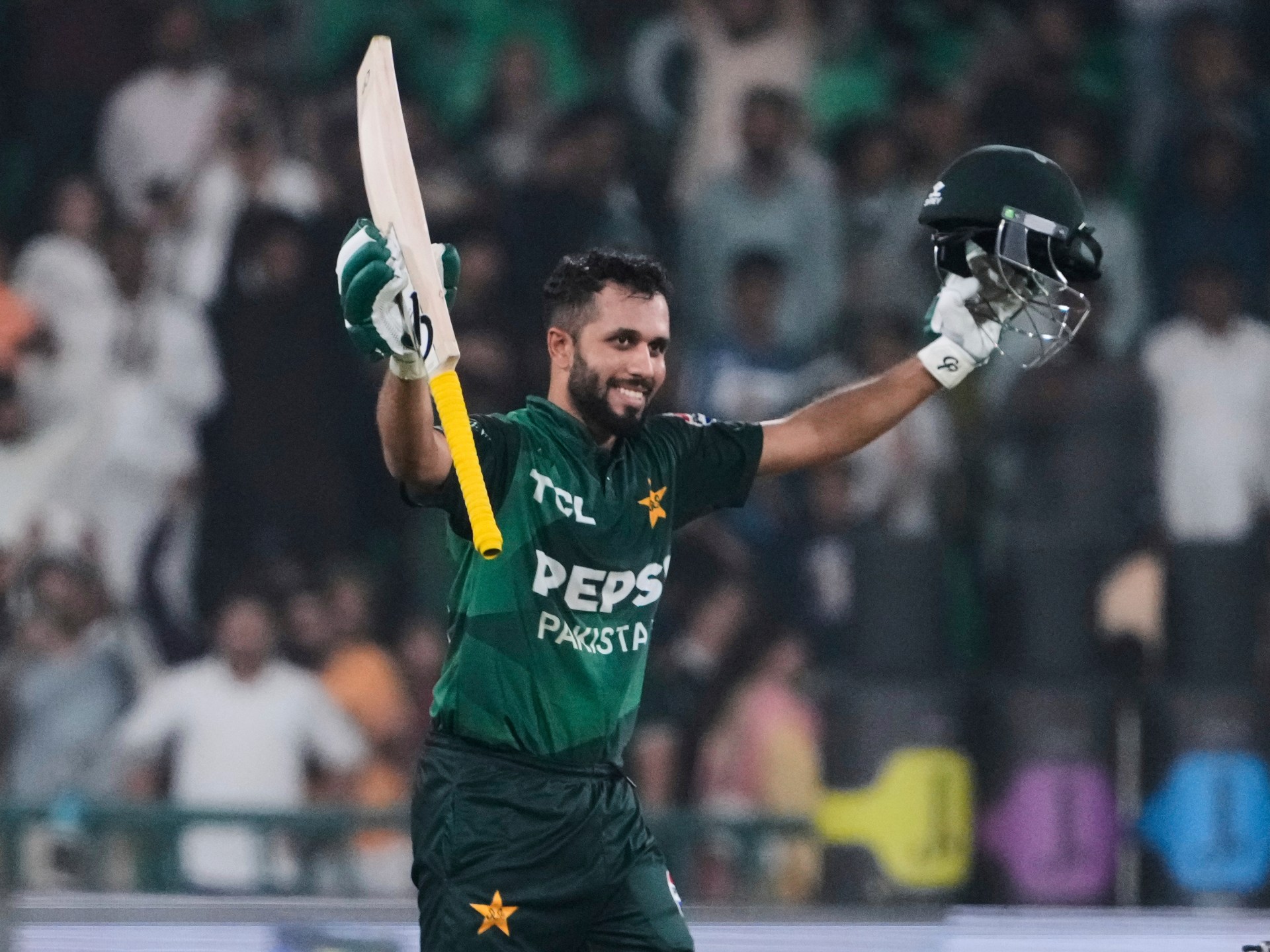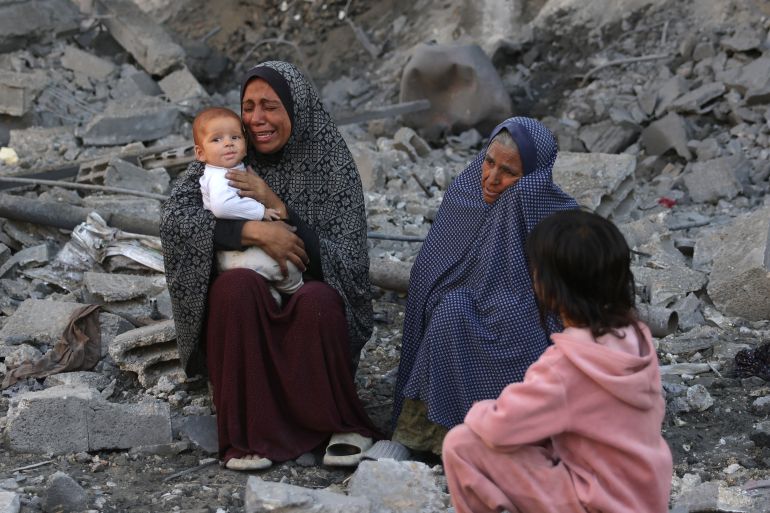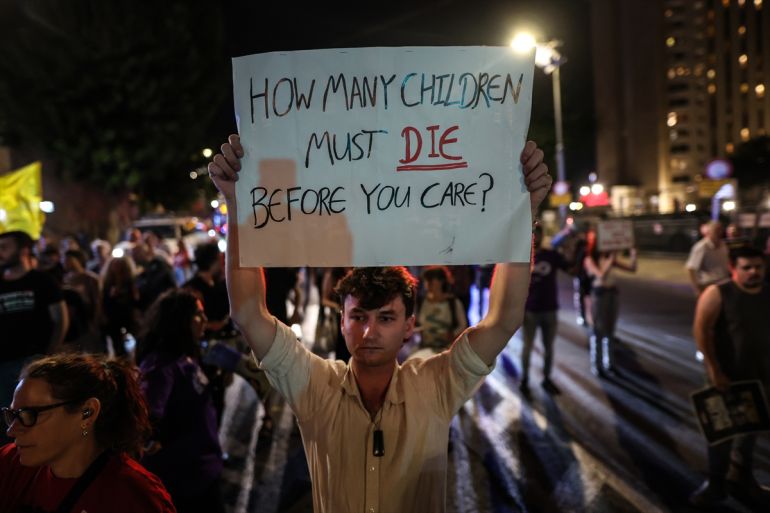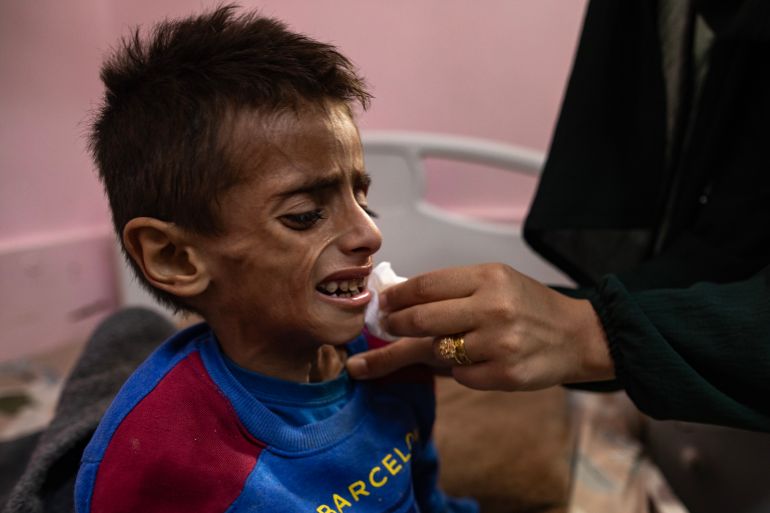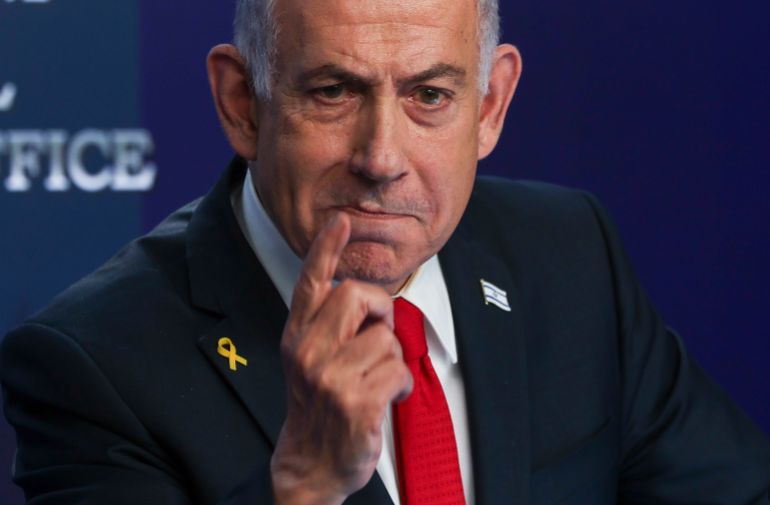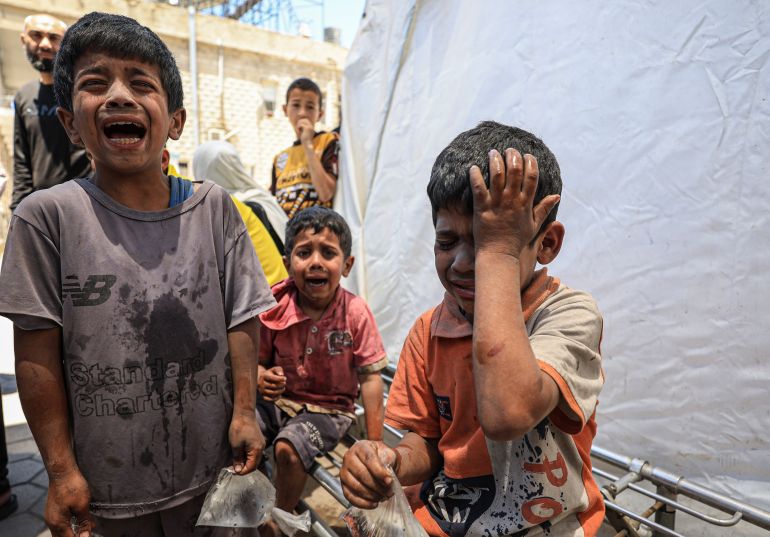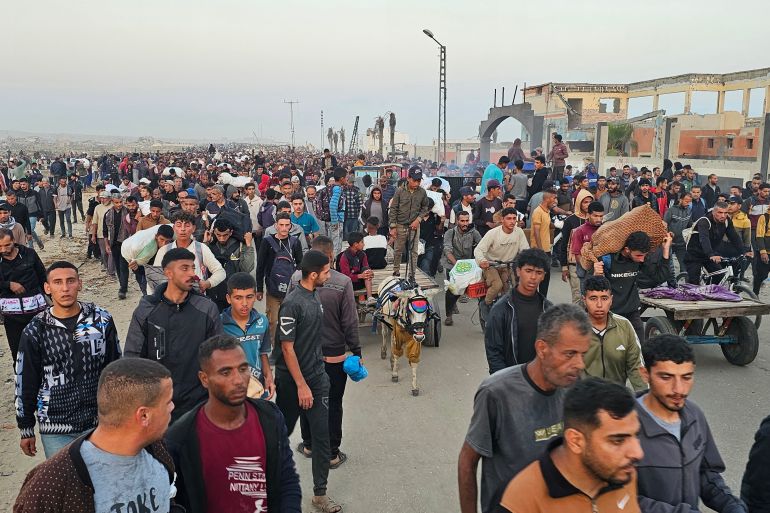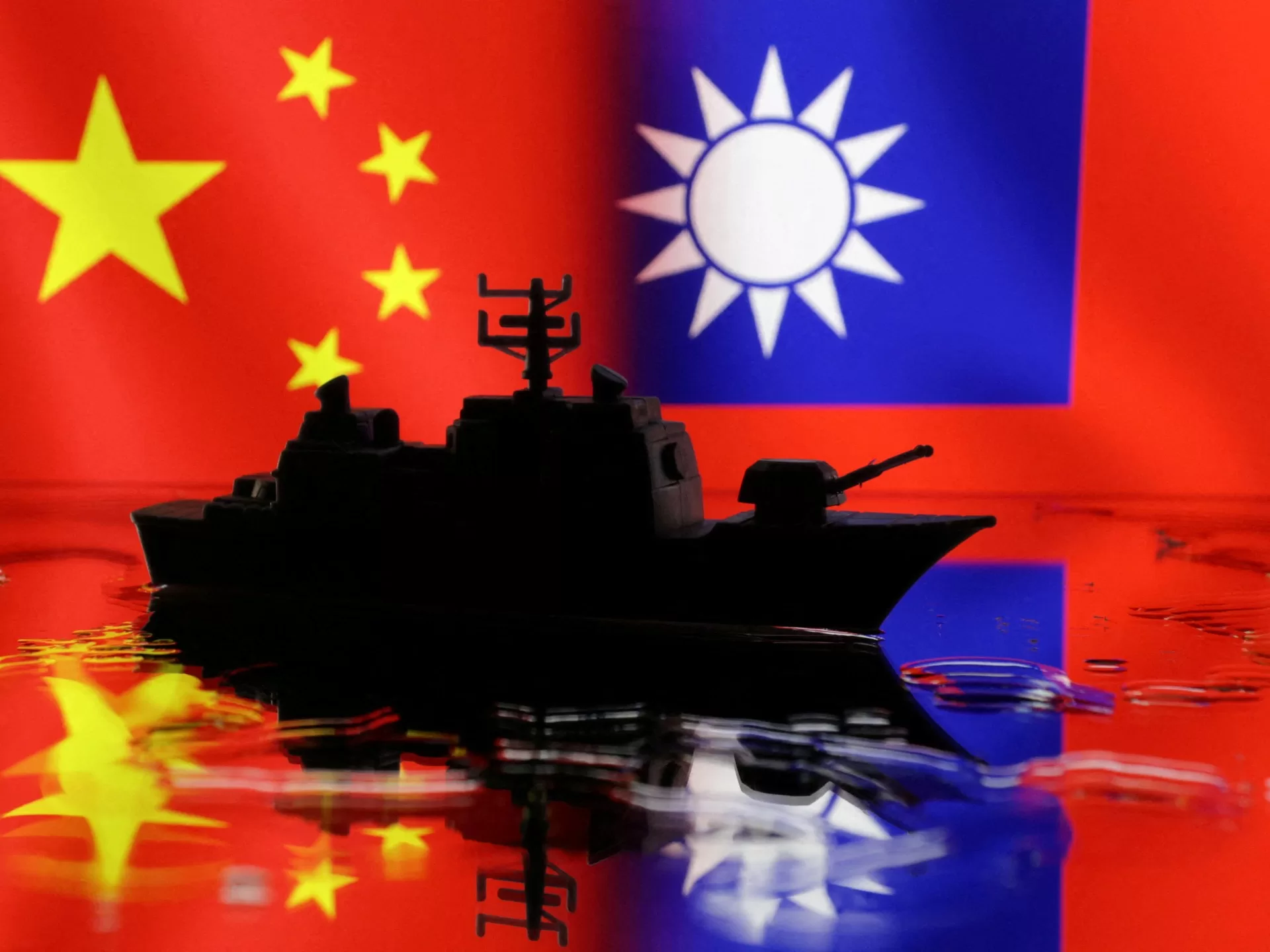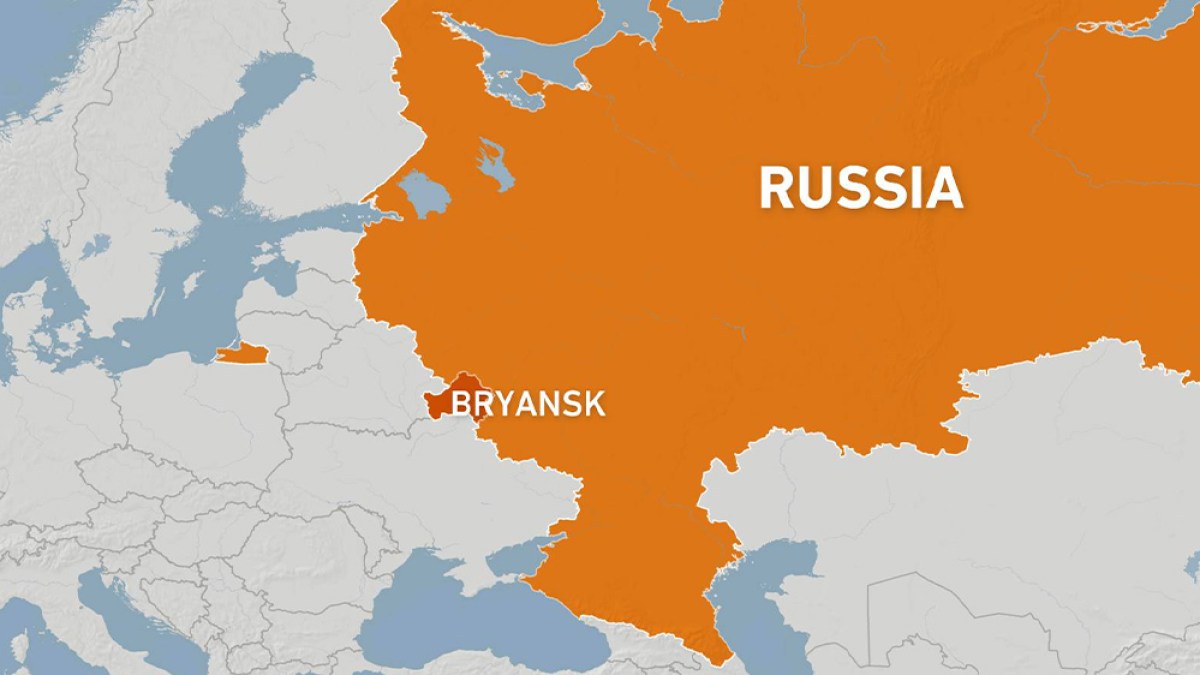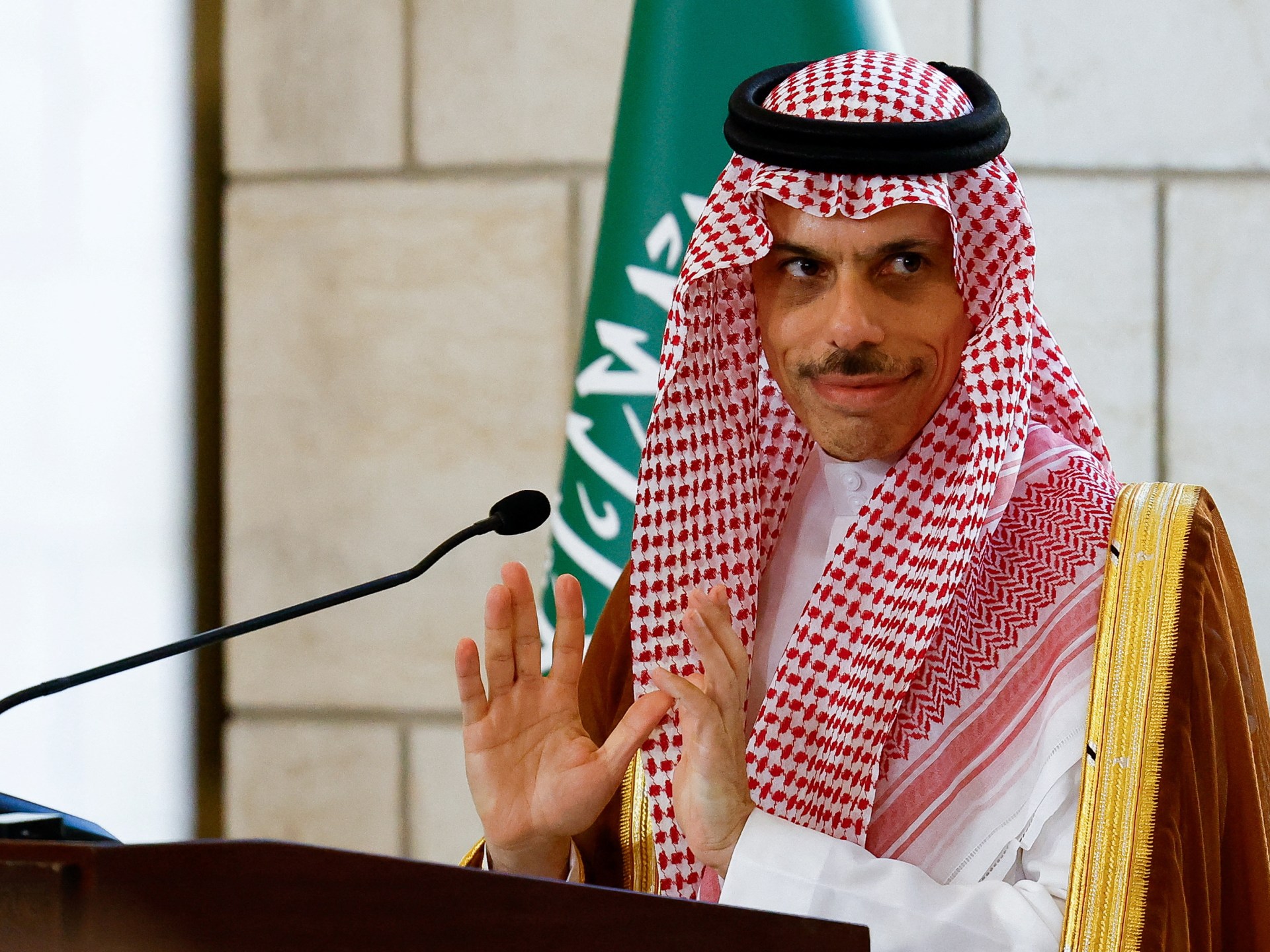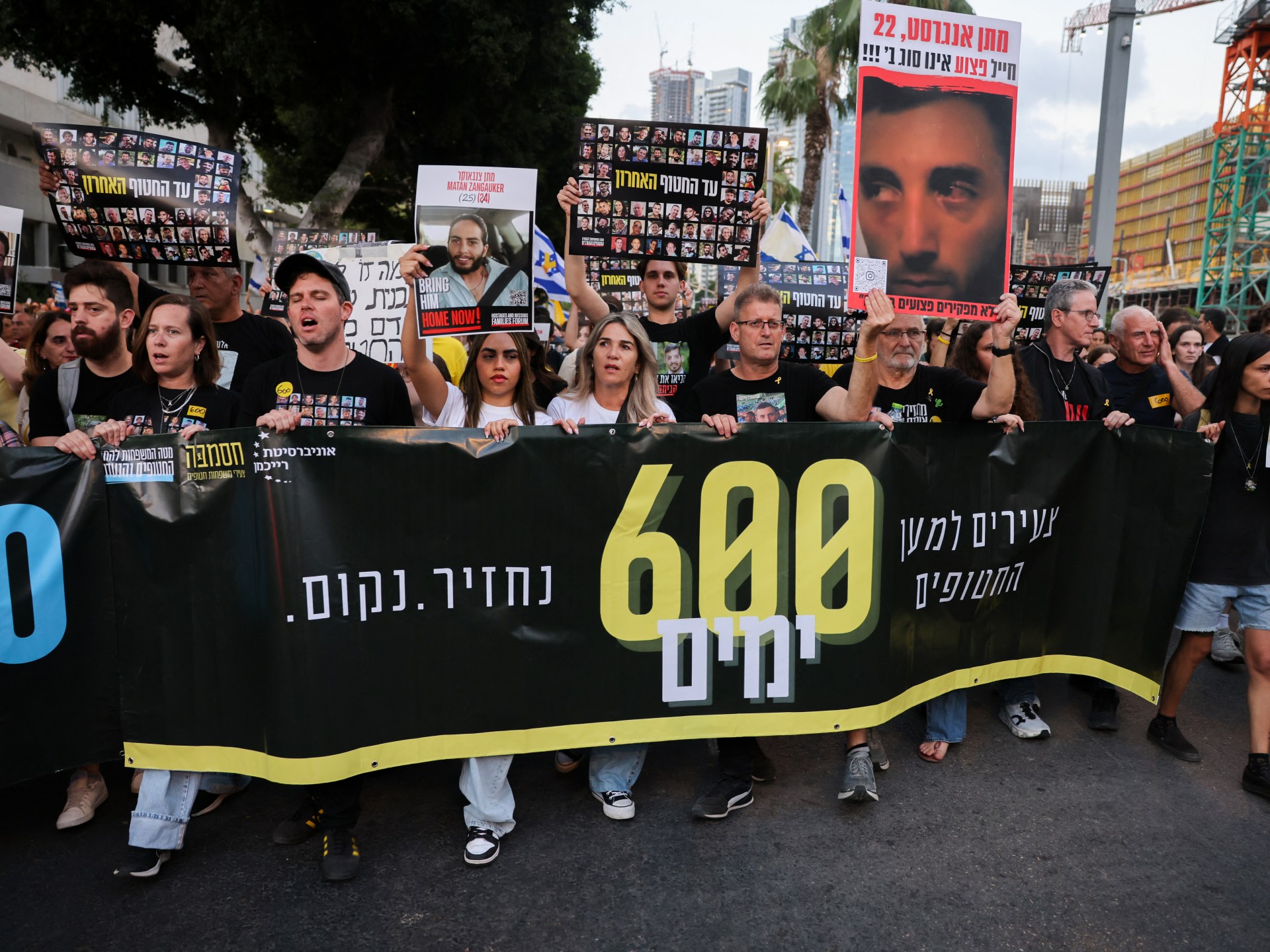Voters in South Korea are choosing a new president to replace Yoon Suk-yeol who was impeached and removed from office over his brief and ill-fated martial law bid in December.
The snap election on June 3 is pivotal, with implications for South Korea’s democratic future, as well as its ties with China, the United States and its nuclear armed neighbour, North Korea.
The winner – who will serve a single term of five-years – faces the task of addressing the fallout from the martial law decree, which lasted six hours but unleashed political chaos, including mass protests, a riot at a court and three caretaker leaders in six months.
The new president will also have to tackle a deepening economic downturn and manage tariff negotiations with the US, which has imposed a 25 percent levy on key exports such as steel, aluminium and automobiles.
Here’s what you need to know about the June 3 poll:
Who are the candidates?
There are six candidates on the ballot, but the main contenders are Lee Jae-myung of the opposition Democratic Party of Korea (DP), and Kim Moon-soo of the governing conservative People Power Party (PPP).
Who is expected to win?
Lee, 61, a human rights lawyer-turned-politician, is the clear frontrunner.
A Gallup Korea poll on May 28 showed 49 percent of respondents favoured the liberal candidate, while 36 percent said they would vote for Kim, 73, a staunch conservative who served as labour minister in Yoon’s government.
Trailing in third place is Lee Jun-seok of the conservative New Reform Party, at 9 percent.
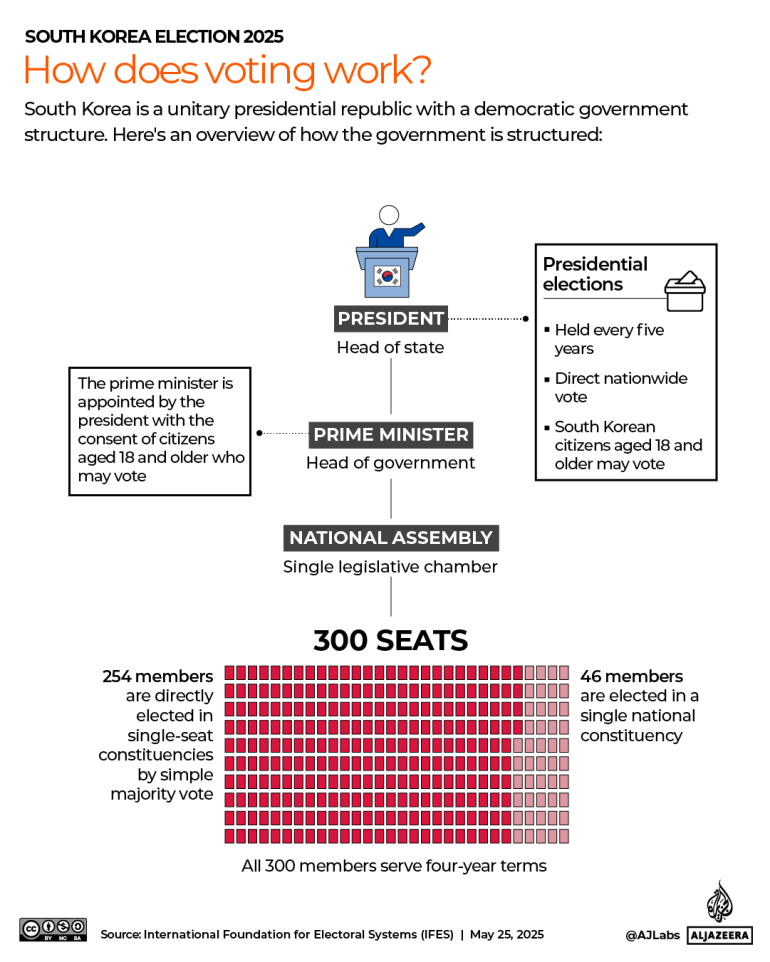
What are the key issues?
Yoon’s botched martial law bid has cast a shadow over the race.
It put Lee, who lost the last election to Yoon in 2022, back on track for the presidency.
The leader of the opposition was instrumental in foiling the president’s plan. On December 3, when Yoon declared martial law – in a bid to quash the Democratic Party-dominated parliament, which he portrayed as “anti-state” and a “den of criminals” – Lee rushed to the National Assembly and climbed the walls of the building to avoid the hundreds of armed troops deployed there. He livestreamed his exploit, urging supporters to come to the parliament and prevent the arrest of legislators.
Despite the troop blockades, enough legislators managed to make it to the parliament and vote to end martial law. The assembly went on to impeach Yoon on December 14.
“This election would not have happened if not for the declaration of martial law by Yoon Suk-yeol and his impeachment,” said Youngshik Bong, research fellow at Yonsei University in Seoul. “These issues have sucked in all others like a vortex. Everything else is marginal.”
On the campaign trail, Lee has pledged to bring to justice anyone involved in Yoon’s failed bid and has also promised to introduce tighter controls on the president’s ability to declare martial law.
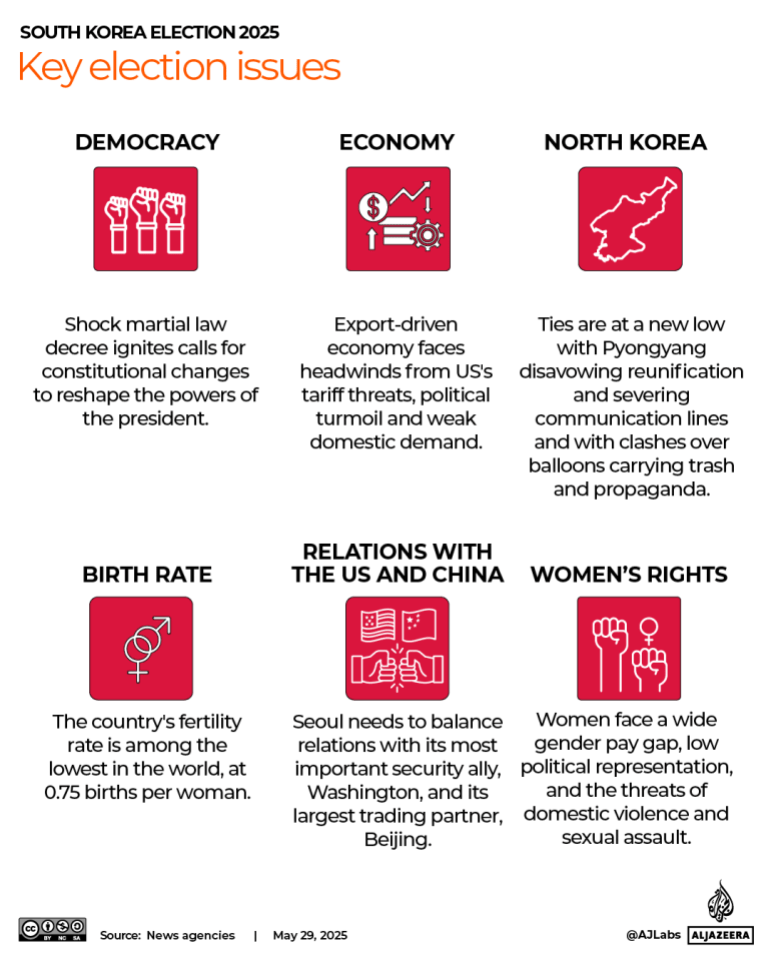
Where the candidates stand on the martial law attempt
Lee, the opposition leader, has also proposed constitutional changes to introduce a four-year, two-term presidency – at the moment, South Korean presidents are only allowed a single term of five years. Lee has also argued for a run-off system for presidential elections, whereby if no candidate secures 50 percent of the popular vote, the top two candidates take on each other in a second round.
“A four-year, two-term presidency would allow for a midterm evaluation of the administration, reinforcing responsibility,” he wrote on Facebook, calling for a constitutional amendment to enable the change. “Meanwhile, adopting a run-off election system would enhance the legitimacy of democratic governance and help reduce unnecessary social conflict.”
The PPP’s Kim has accepted Lee’s proposals for a constitutional amendment to allow a two-term presidency, but has suggested shortening each term to three years.
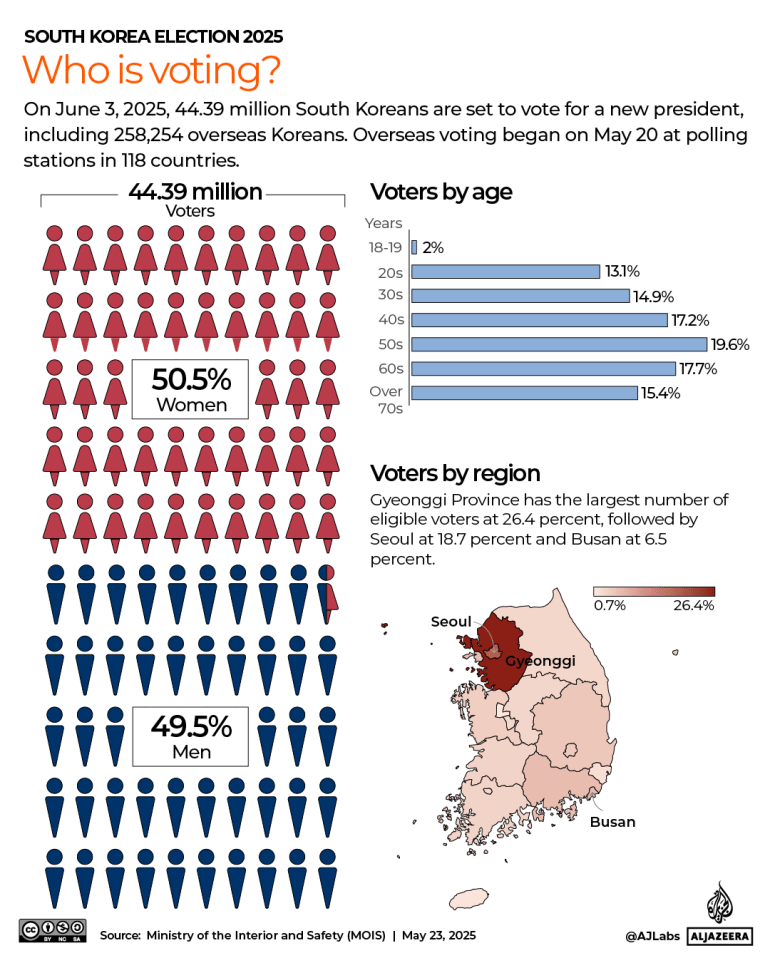
Yoon’s martial law bid, however, has left the PPP in crisis and disarray.
Infighting plagued the embattled party as it tried to choose the impeached president’s successor. Although Kim won the party primary, its leaders tried to replace him with former Prime Minister Han Duck-soo. On the eve of the party’s campaign launch, they cancelled Kim’s candidacy, only to reinstate him after party members opposed the move.
Bong, at Yonsei University, said the infighting as well as divisions in the conservative camp over Yoon’s decree has cost it support.
“Kim Moon-soo has not set his position clearly on the martial law declaration,” Bong said. “He has not distanced himself from the legacy of Yoon, but at the same time, he has not made it clear whether he believes the declaration of martial law was a violation of the constitution. So the PPP has not really had enough energy to mobilise its support bases.”
Still, Kim appears to have eroded what was a more than 20 percent point gap with Lee at the start of the campaign.
But he has failed to convince the third placed contender – Lee Jun-seok – to abandon his bid and back the PPP to improve its chances. The New Reform Party’s Lee, who is 40 years old, said on Tuesday there would be “no candidate merger” with “those responsible for the emergency martial law”.
What about foreign policy?
Although policy debates have taken a backseat, the outcome of the election could reorient South Korea’s approach towards North Korea. The two neighbours are technically in a state of war as the Korean War of 1950-1953 ended in an armistice rather than a peace treaty, and ties between them are at a new low.
North Korean leader Kim Jong Un has called for rewriting his country’s constitution to scrap the longstanding goal of unifying the war-divided nations and described Seoul as an “invariable principal enemy”. Pyongyang has also severed communication lines, and the two countries have clashed over balloons and drones carrying rubbish and propaganda.
Lee of the Democratic Party has promised to ease tensions if elected, including by restoring a military hotline, and committed to maintaining the goal of eliminating nuclear weapons from the Korean Peninsula.
Kim, however, has backed Yoon’s hardline approach, promising to secure “pre-emptive deterrence” through tools such as ballistic missiles and the redeployment of US tactical nuclear weapons. He has said he would also seek a path for the country to pursue nuclear armament by securing the right to reprocess nuclear fuel, a key step towards building atomic weapons.
The two candidates also differ in their approach to the US, the country’s most important security ally, and to China, its biggest trading partner.
Lee, who espouses what he calls a pragmatic foreign policy, has said it is crucial to maintain South Korea’s alliance with the US and pursue security cooperation with Japan. However, he has pledged to prioritise “national interests” and said there’s “no need to unnecessarily antagonise China or Russia”.

Kim, meanwhile, has questioned Lee’s commitment to the US-South Korea alliance, and has promised to hold an immediate summit meeting with US President Donald Trump if elected to discuss tariffs.
“I have a very friendly and trusting relationship,” with the US leader, Kim has said.
He has also indicated a willingness to discuss sharing more of the cost of stationing US troops in the country, something Trump has demanded for years.
Lee Sung-yoon, board member of the Committee for Human Rights in North Korea, described the policy differences between the rival camps as “immutable” and referred to earlier comments by the Democratic Party’s Lee, because of which some view him as being soft on China and Russia.
“In the past, Lee has said South Korea should not get involved in China’s posture towards Taiwan, and just say thank you to both Beijing and Taiwan and stay out of the conflict. He has said of the trilateral defensive drills among US, Japan and South Korea as ‘a defence disaster’ and an ‘extremely pro-Japanese act’. And more than once he has said that Ukrainian President Volodymyr Zelenskyy incited Russia to invade because he was a political novice who said unfortunate things.”
The analyst said Lee has – over the course of the election campaign – tried to walk back some of his statements in a bid to appeal to more moderate voters.
However, “I would venture to guess that people sitting in the councils of power in Washington, DC, or Tokyo or in Kyiv, Ukraine, are not overly jubilant at the prospect of a Lee administration,” he said.
When will we know the results?
Koreans overseas have already cast their ballots, and early voting took place on Thursday and Friday. Large numbers of people turned out for the early vote, including the two frontrunners.
According to the National Election Commission, some 44.4 million people in the country of 52 million are eligible to vote. On election day, which is a public holiday, polling stations will open at 6am (22:00 GMT) and close at 8pm (20:00 GMT).
Counting will begin immediately and the winner will be known that evening or in the early hours of the following day. The candidate who receives the most votes will be deemed the winner, even if they don’t win 50 percent of the votes.

